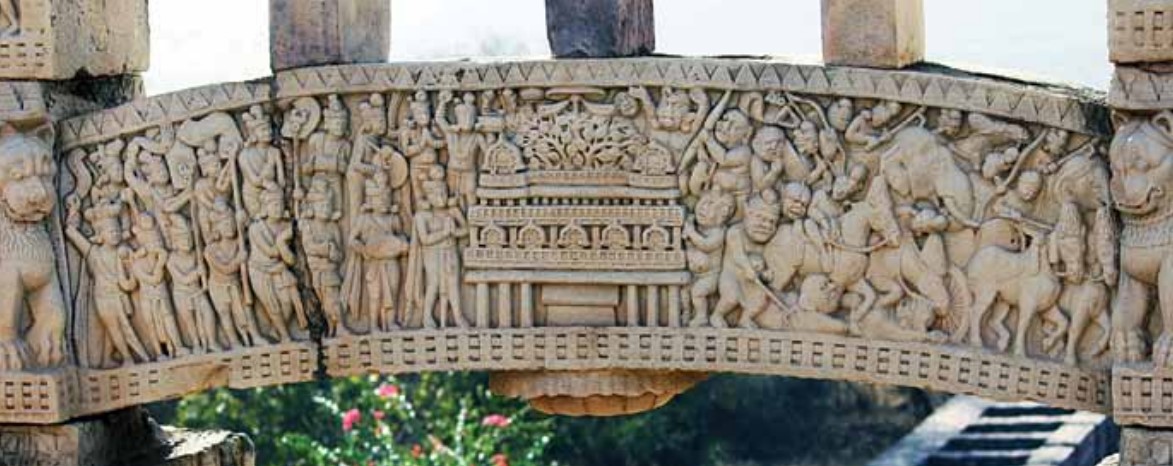Stories Engraved in Stone: Jataka Tales and the Scenes from Buddha’s Life at Sanchi – Surabhi Sharman
In the heart of India, located some 48 km from Madhya Pradesh’s capital city, Bhopal, is one of the most revered sites of Buddhism, Sanchi. In the ancient past, Sanchi was located near Vidisha, an important town under the Sunga dynasty in the 2nd century BCE. It was during the rule of Emperor Asoka that stupas (dome-like structure) housing the relics of Buddha were erected at various sites. In c. 255 BCE, the Great Stupa was erected at Sanchi during the reign of Asoka. Sanchi was a prolific centre of Buddhism under various dynasties, including Mauryan, Gupta, Shunga, and the Satavahana dynasty. A place of pilgrimage for Buddhists, Sanchi is an open art gallery which has some of the finest specimens of ancient Indian craftsmanship at display. The four gateways or the toranas, erected at the four cardinal points of the Great Stupa under the Satavahana rule are profusely decorated with some of the best examples of Indian art.

The Great Stupa at Sanchi is essentially a hemispherical dome (anda) with a terrace (medhi) around it, which serves as a path for ambulation (pradakshina patha). The terrace is accessed by the visitors through a stairway (sopana). On the ground level is another path of stone for circumambulation with a balustrade around it, which has four entrance gateways (toranas) at four cardinal points. These toranas have been decorated with rich sculptural reliefs on both the inner and the outer sides. The reference to stupas or sepulchral mounds can be found in the Satapatha Brahmana. The text also references to rituals of fixing pegs around the funeral mound. Some scholars such as Tarapada Bhattacharya related the ritual of fixing pegs around funerary mounds as the origin of the erection of gateways or toranas. Percy Brown opined that the practice of erecting bamboo fencings around Vedic villages, with an entryway for cattle (gramadvara) was the source of inspiration for the toranas. Benjamin Rowland pointed that the presence of gateways at cardinal points, along with the presence of an ambulatory was reminiscent of solar cults of the pre-Buddhist period. In literature, the word torana-dwara occurs in the Jataka tales, and the visual examples of these gates can be found in the art of Bharhut and Sanchi, where for instance, on a panel where the Siege of Kusinagara is depicted, an excellent example of an arched gateway is found.

